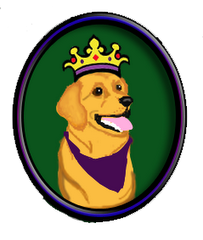There seems to be a great deal of debate on "by-products" in pet foods. Are they nutritious, protein-rich foods, or are they just junk? I must admit I was a militant "no by-product" person until fairly recently. I have been doing a good deal of research on this subject and my feelings on the issue have changed. Let's examine the facts.
Meat by-products in dog food by law do not include hair, horn, teeth or hooves, feathers or manure. It does include organs, including the lungs, spleen, intestines, blood, brains, kidneys and liver, and in the case of chicken byproducts will include the head and feet, backs and necks. About 50 percent of a slaughtered cow will not go for human use, most of this leftover goes into the pet food industry, not because it's unhealthy. How many of us rush out to the grocery store to eat a daily meal with tripe (stomach), chitlins (intestines), and scrambled brains? Ugh. Doesn't sound very appealing, does it? But what about your dog. What would your dog eat if given a choice? (...more...)
Watch a nature program with wild dogs and wolves and you'll see them eating these parts of the animal. Those organs are always the first to be eaten by wild canids, wild felines, and pretty much any other. They don't go for the 'meaty haunch', they go for the gut and pull out all that gooey stuff and eat it. They crunch the raw bones to get the yummy marrow, not to mention the calcium and natural glucosamine from the bone and cartilage. Believe it or not, while organ meats are gross to think of eating to humans, they are also extremely high in natural vitamins and minerals.
Go to any website the promotes a raw food diet for pets and read some of the things they recommend as great things to feed. Or shop the many frozen raw foods that are available to purchase, and read the ingredients of those. You will see that chicken necks are one of the favored items! Organ meats are rich and fed less often, but hearts are full of taurine which is very beneficial to dogs. Livers, kidneys, brains....all those other "yucky" things are full of protein and other nutritional goodies. You can buy canned, green tripe. Tripe is considered by many experts to be one of the most complete foods for carnivores. It is actually the stomachs of the cow complete with partially digested grass, etc. It contains a plethora of enzymes and beneficial bacteria. Freeze dried lungs are a popular treat for dogs, as is dried liver. What about ears? What dog doesn't love a pig ear? Moo tubes, another popular chew treat, are dried trachea. And I won't even begin to touch on the whole "bull pizzle" thing....
The protein quality of by-products sometimes is better than that from muscle meat.
There are two schools of thought when it comes to by-products in dog food. Some say that because a dog in the wild would eat the entire animal when killing prey, including skin, organs and bones, some amount of by-products in dog food is just fine. What you don't want, say reviews, is unidentified by-products, often listed as "meat by-products." Experts say this could include zoo animals, road kill and '4-D' livestock (dead, diseased, disabled, dying). Most shockingly, "meat by-products" can even include euthanized dogs and cats. In 1990 the American Veterinary Medical Association and the FDA confirmed that some pet food companies were using the bodies of euthanized pets as by-products in their foods. It turns out that this practice was limited to small rural rendering plants and a few other assorted links in the pet food manufacturing chain. For these reasons, reviews that do approve of some by-products in pet food say that dog owners should look for specific origin, such as "chicken by-product" or "lamb by-product."
The other school of thought is that by-products should be avoided entirely, and that a dog's diet should contain meat, vegetables and absorbable grains. These critics say that it's simply too hard to know what exactly is included in by-products, and some say that these unwanted animal parts may contain bacteria or even parts from cancerous animals.
Where does all that leave us? In my personal opinion, by-products are okay IF certain criteria are met. Make sure the by-product meal was specific such as chicken or lamb by-product meal and not just listed as "poultry", "meat" or "animal" by-product meal. . If a label says "chicken by-product," all the parts must come from chicken; the same goes for lamb, beef, etc. Avoid at all cost the generic "meat by-products" or unidentified "poultry by-products". Heaven only knows what could be in those.
All that being said, do your own research. You will find opinions on the extreme of both sides of the issue. As I said earlier, my own opinion has changed after a good deal of reading and research. And basically, it comes down to this. Feed what you are comfortable with, and what your dog seems to do best on, but don't rule out a food entirely because it contains by-products without reading a little further. Remember, just because it's disgusting to us doesn't mean it's not great for your pet.
Food for thought.


















































